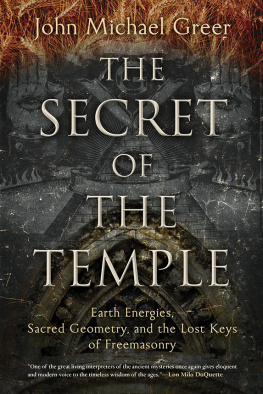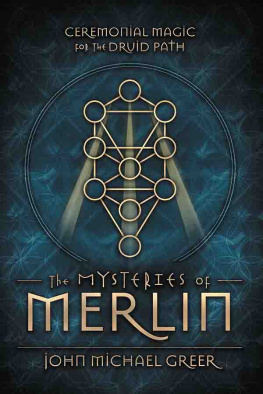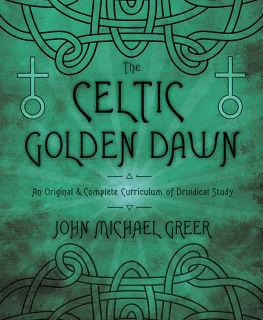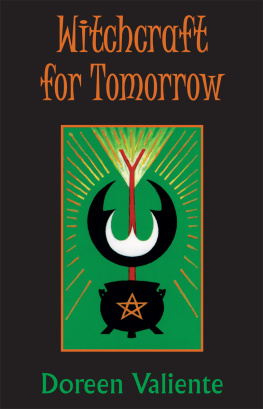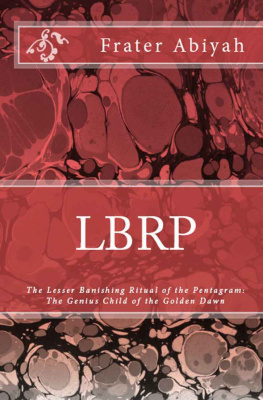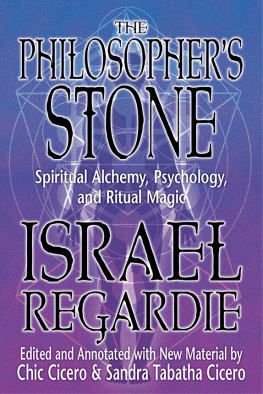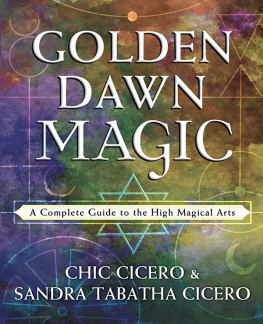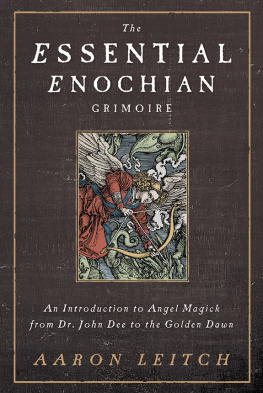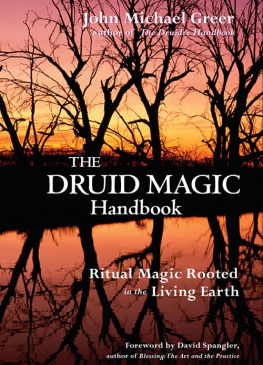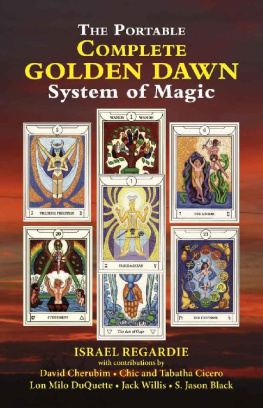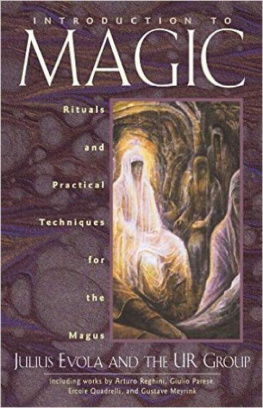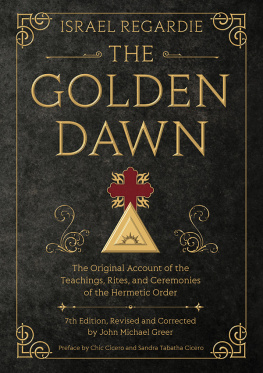FOREWORD TO THE NEW EDITION
I suspect most writers have mixed feelings when they look back over books from the early stages of their writing career. Certainly this has been true for me, and never more so than with the book you now hold in your hands. I wrote it in 1996, a year that was at once the beginning of my career as a published author and the peak of my involvement in the Golden Dawn tradition of ceremonial magic. At the time I had been practicing Golden Dawn magic for twenty years in all, and the process of writing my first published book on the traditionPaths of Wisdom, a study of the magical Cabalasparked a cascade of insights into the practical work of Golden Dawn magic. What started as a chapter on advanced ritual work in Paths of Wisdom exploded into a book of its own. I wrote it in a white heat of inspiration, fueled by the intensive ritual work needed to test each of the ceremonies in the book, and sent it to its first publisher convinced that I had produced the definitive guide to Golden Dawn magic.
The next year or two provided an excellent lesson in the difficulties encountered on the way from inspiration to realization. The book's first publisher managed to turn much of the Hebrew in the book into gibberishit didn't help that nobody in the editorial department could pick their way through the Hebrew alphabet, even with a chart of the letters on their desk, or even knew that Hebrew reads from right to left. Still, most of the problems with the original edition came from my side. With the serene confidence of the half-educated, I thought I understood much more than I actually did, and several of the things I thought were the book's best features became sources of extreme embarrassment as my grasp of magical philosophy and practice deepened. In particular, I had saddled the book with an arbitrary division of the Golden Dawn system of initiation into three degrees, and though the rituals assigned to the First Degree worked wellnot surprisingly, as they came straight out of the Golden Dawn papersthose I constructed for the Second and Third Degree turned out to be poorly conceived and ineffective. Sweeping generalizations in the discussion of the Middle Pillar exercises and elsewhere also provided a useful lesson in humility.
Despite all these drawbacks and very modest sales, though, Circles of Power found an audience that welcomed it as few of my other books have been welcomed. I have received more letters and emails from readers of other books I wrote on occultism, but never so many from the people I most hoped to reach, the serious students of practical magic for whom books such as these are tools for the Great Work. Long after Circles of Power vanished from bookstore shelves and lingered only in the backlist of its first publisher, enthusiastic students of Hermetic ceremonial magic contacted me to tell me that it had become a valuable resource in their own magical training. Ultimately that was why, when I had the opportunity to have Circles of Power released in a new edition, I jumped at the chance.
The process of preparing the manuscript for the new edition gave me the opportunity to correct a great many errors. Readers familiar with the original edition will notice a number of changes, some subtle, others less so. The Hebrew lettering has been corrected, discussions of magical theory have been modified in the light of subsequent experience, and the system of three degrees has been edited out and a few of the rituals modified accordingly. Nearly everything else has been left as it was. If some passages still show the overconfidence of the insufficiently experienced, I can only hope that my readers will accept the book for what it isthe journeyman-work of a mage in training, which has been useful to other students of the Great Art of magic.
John Michael Greer, 2017
FOREWORD TO THE ORIGINAL EDITION
RITUAL MAGIC IN THE HERMETIC TRADITION
T his book, like the tradition on which it's based, had unlikely origins. It began as part of a chapter in my previous book Paths of Wisdom: An Introduction to the Hermetic Cabala. After covering the theory and symbolism of the magical Cabala, the essentials of practice and some of the basic ritual work of the tradition, I hoped to summarize the more advanced methods of Cabalistic ritual magic in a few pages before going on to the chapter on meditation. Those few pages ballooned into a chapter and a half before I realized that my plans were going to have to change. The material that needed to be covered outstripped the space I had available in Paths of Wisdom, and in time it became obvious that it would need a book of its own.
Circles of Power: An Introduction to Hermetic Magic is that book. It is intended as a practical guide to the system of Cabalistic ritual magic developed by the Hermetic Order of the Golden Dawn in the late nineteenth century. That system is the most complete and fully developed of the living traditions of Western magic, and forms the foundation for much of the current occult revival throughout the Western world.
The Golden Dawn itself was the product of an earlier revival of magical traditions. Founded in 1888 by William Wynn Westcott and Samuel Mathers, both of them Freemasons and practicing magicians with some claims to scholarship, it attracted a circle of men and women who saw magic as a way toward spiritual as well as practical ends. In pursuit of these ends, they drew together magical teachings from a dizzying array of sources and assembled them into a coherent and effective system of mystical and magical philosophy, theory and practice, which deserves to rank among the world's major spiritual traditions.
Problems in its organizational structure caused the collapse of the Order itself in 1900, but many Golden Dawn members went on to found other magical orders along the same lines, using much of the same system. These successor ordersthe Stella Matutina, the Fraternity of the Inner Light, and many othersproduced many of the most important magicians of the twentieth century, and gave the Golden Dawn system a wider exposure. The process culminated in 1938-41 when Israel Regardie, an ex-member of the Stella Matutina, published an extensive collection of rituals and papers in four volumes as The Golden Dawn. Since then, basic elements of the system such as the Lesser Ritual of the Pentagram have become all but universal in modern magical circles.
Too often, though, Golden Dawn techniques have been simply copied blindly, without any attempt to put them in the context of a coherent system or to work out their potentials and their applications to practical and spiritual goals. The more advanced levels of the Order's magical work have received very little attention in recent years, and many of the possibilities for expansion built into the systempossibilities that seem never to have been developed within the Golden Dawn or its successor ordershave been left equally neglected. This has been especially true of the ritual methods developed by the Order. This is unfortunate, because the higher reaches of Golden Dawn ritual magic involve some of the most fascinating and powerful aspects of the whole system.


